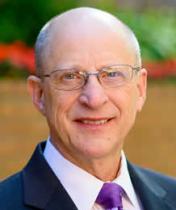Juror Understanding of DNA Evidence: An Empirical Assessment of Presentation Formats for Trace Evidence with a Relatively Small and Quantifiable Random Match Probability
Abstract
In cases involving scientific evidence in the form of a test result linking the accused to a crime (e.g., DNA match), expert testimony sometimes can also provide a suitably reliable estimate of the chance of a coincidental match (the random match probability). Considerable controversy, however, attends the question of whether to allow testimony reporting that probability and, if so, in what form it should be given. Additional and related controversy concerns the implications of proficiency test results for testimony about the chance of false positive lab error, especially when that figure greatly exceeds the random match probability. This paper reports a large scale empirical study, using members of an Illinois jury pool, designed to contribute to our understanding of the issues involved. Our results confirm earlier research suggesting that jurors, rather than being credulously overwhelmed by the science, tend to undervalue forensic match evidence. On the other hand, our results differ from most prior research in showing that variation in the way the random match probability is presented and explained can reduce the extent of the undervaluation, without at the same time inviting inferential fallacies that would exaggerate the probative value of the match. And contrary to predictions, our results also show that incorporating information about comparatively large lab error rates, when it has any discernible effect, actually increases the jurors' assessed probability of guilt and willingness to convict.
Keywords
trace evidence, random match probability, DNA, prosecutor's fallacy, defense attorney's fallacy, inversion fallacy, misaggregation, Bayesian instruction, scientific evidence, lab error rates, vividness, averaging hypothesis, jury, cognitive error
Publication Date
2005
Document Type
Article
Place of Original Publication
Journal of Legal Studies
Publication Information
34 Journal of Legal Studies 395 (2005)
Repository Citation
Nance, Dale A. and Morris, Scott B., "Juror Understanding of DNA Evidence: An Empirical Assessment of Presentation Formats for Trace Evidence with a Relatively Small and Quantifiable Random Match Probability" (2005). Faculty Publications. 629.
https://scholarlycommons.law.case.edu/faculty_publications/629

